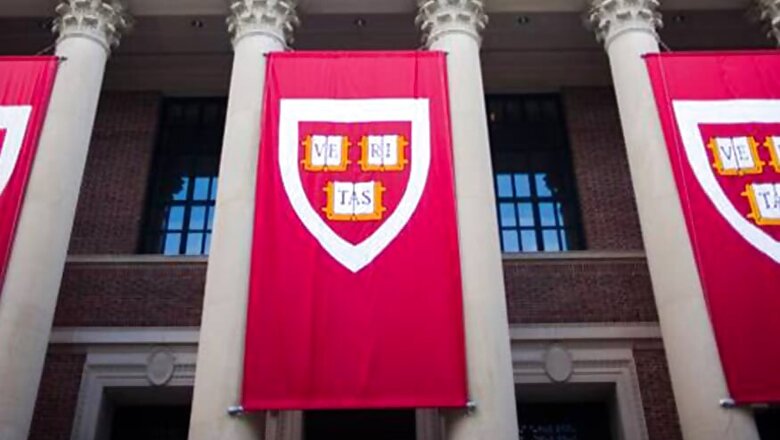
views
Boston: In a federal court case deciding if the Harvard University discriminates against Asian-American applicants, both parties say the evidence is firmly on their side.
Harvard and the group Students for Fair Admissions filed dueling reports from outside economists on Friday, each studying six years of Harvard admissions data and each reaching wildly different conclusions.
The reports were filed in Boston’s federal court as both parties attempted to persuade a judge to end the suit before it reaches trial, which has been scheduled to start in October.
It marks a step forward in a lawsuit that has lasted nearly four years and raises implications for many other colleges that, like Harvard, say they consider race as one of many factors to gather a diverse mix of students.
Edward Blum, a legal strategist who founded Students for Fair Admissions, issued a statement saying his group’s filing “exposes the startling magnitude of Harvard’s discrimination”.
Harvard countered with a statement calling the group’s analysis “incomplete and misleading”, saying it paints a “dangerously inaccurate picture” of the school’s admissions process.
Both sides built their cases on records detailing Harvard’s admissions decisions for individual students who applied from 2010 through 2015.
Students for Fair Admissions relied on an analysis from Peter Arcidiacono, a Duke University economist who says he found evidence of bias against Asian-Americans.
Arcidiacono’s study concluded that if Harvard relied only on the academic scores it assigns to each applicant, more than half of admitted students would have been Asian-American in the six years in question. Instead, they made up just 22 percent.
To blame, he wrote, are subjective rating categories for which Asian-American applicants consistently received lower scores than their white peers.
Asian-Americans, for example, received lower scores than any other racial group in a category for “personal qualities”, and they fared worse than whites in an overall rating category that isn't based on any particular formula.
Yet Harvard alumni who interview applicants and provide their own ratings generally scored Asian-Americans higher than whites, a contrast that Arcidiacono says suggests bias.
The university attacked his analysis, saying it’s flawed because it excludes applicants believed to have an advantage regardless of race, including relatives of alumni and athletes recruited by the school.
Instead, Harvard sought its own study from David Card, an economist at the University of California, Berkeley, who found no evidence of discrimination against Asian-Americans.
Looking at a wider pool of applicants and admissions factors, Card found that the effect of being Asian-American was “statistically indistinguishable from zero”.
Both sides also are sparring over a 2013 internal study at Harvard exploring the racial makeup of the admitted class.
The inquiry, uncovered by Blum’s group, was conducted amid earlier allegations of discrimination against Harvard.
The study found that even considering factors like legacy status and extracurricular activities, 26 percent of the admitted class would have been expected to be Asian-American. Instead, 19 percent were.
Blum’s group says the report is proof of intentional discrimination and that Harvard “killed the study and quietly buried the reports”.
Harvard counters that the study was never intended to evaluate possible discrimination and that it was “incomplete, preliminary and based on limited inputs”.
University officials have painted the lawsuit as an attack on their ability to consider race in admissions, which they say is necessary to ensure diversity on campus.
In 2016, the Supreme Court examined the topic and upheld race-conscious admissions at the University of Texas, but the justices warned that other colleges still must be able to prove affirmative action is the only way to meet diversity goals.
Blum also was a driving force behind that case, helping Texas student Abigail Fisher sue the university. Fisher is also an executive in Students for Fair Admissions, according to the group's tax filings.



















Comments
0 comment